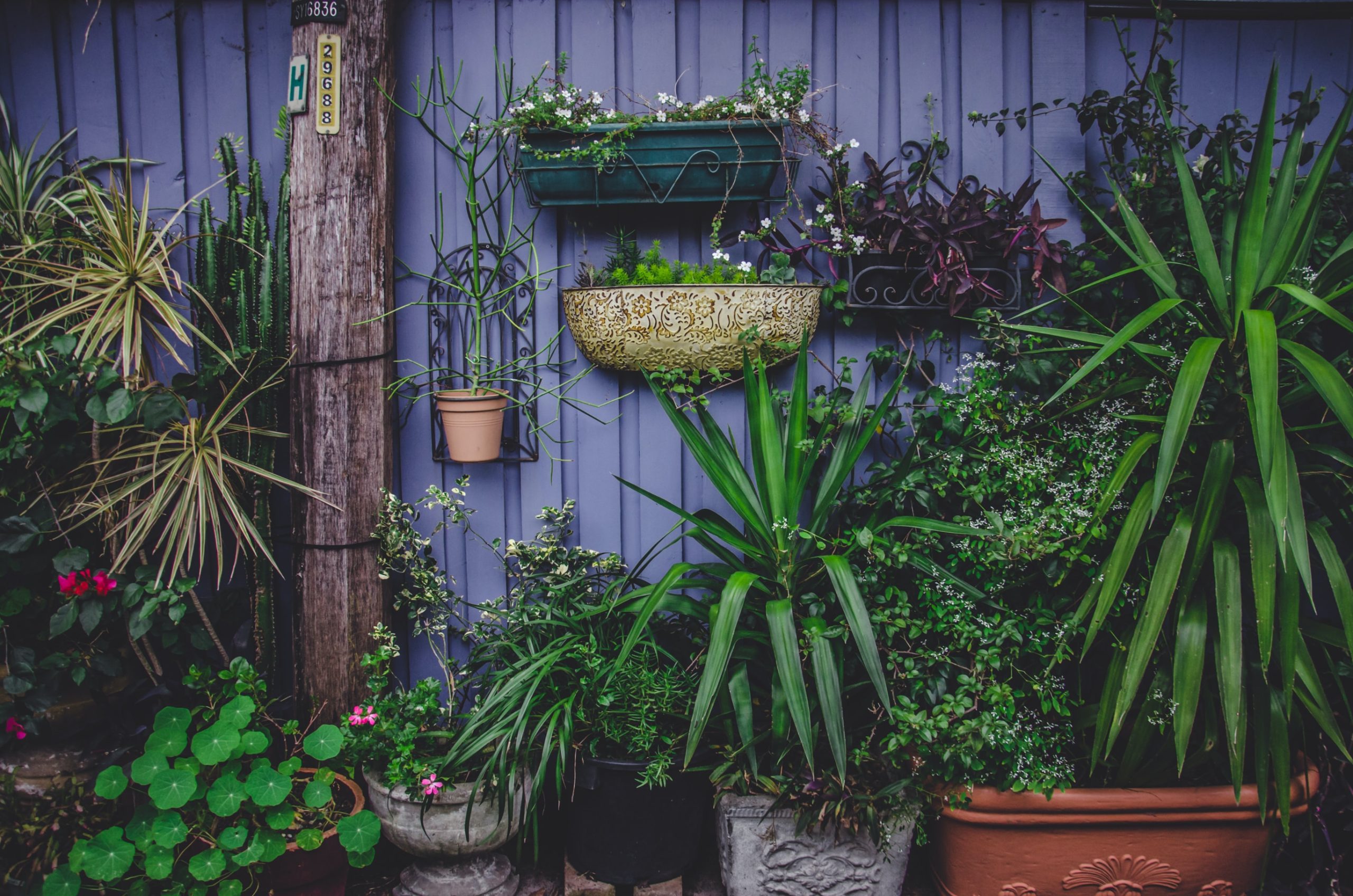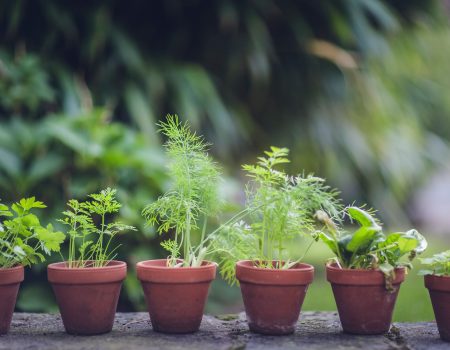Installing a vertical garden along the walls or railings, especially in a small space gardening like a balcony, helps to purify the air and provides therapeutic benefits through its relaxing, biological effects and making your balcony design look like your own little jungle.
Are you wondering how to decorate the balcony accordingly? Want to design your own vertical garden? Check out the article below!
How to Make a Vertical Garden?

A vertical garden, a living wall, is a great way to add greenery to a small space or create a stunning visual feature in your home or garden. Here are some steps to create your vertical garden:
1.) Choose a location
The first step is to select a place for your vertical garden. It can be an indoor or outdoor space that receives sufficient sunlight and where you can easily water the plants.
2.) Decide on the type of structure
Several structures can be used to create a vertical garden. Some popular options include using a trellis, a pallet, a PVC pipe, or a hanging planter. You can also purchase a pre-made vertical garden kit to simplify the process.
3.) Choose the plants
The type of plants you choose will depend on the amount of sunlight your location receives and the type of structure you have chosen. For example, succulents are great for indoor gardens as they require less watering while trailing plants like ivy are better for outdoor gardens. You can also mix and match different types of plants to create a unique look.
4.) Prepare the structure
If using a trellis, pallet, or PVC pipe, you may need to attach a mesh or liner to the structure to prevent soil and water from spilling. Using a hanging planter, ensure it is securely fastened to the wall or ceiling.
5.) Fill the structure with soil
Add soil to the structure, ensuring it is evenly distributed. You can use a special type of soil designed for vertical gardens or create your own by mixing potting soil and sand.
6.) Plant the seedlings
Gently plant them in the soil, ensuring they are well-spaced and have enough room to grow.
7.) Water the plants
Once you’ve planted the seedlings, thoroughly. Depending on the type of plants you’ve chosen and the amount of sunlight they receive, you may need to water them daily or every few days.
As of 2024, 60% of gardeners utilize vertical gardening methods, reflecting a significant increase in awareness and practice over the past decade. This represents a 203% increase from just 3% in 2000, indicating a growing trend towards space-efficient gardening solutions, particularly in urban environments where balcony space is limited.
Best Plants for Vertical Gardens
In this section, we’ll explore the best plants for you vertical gardens and discuss why we recommend each of them.
1.) Edible Plants
You might be surprised to learn that you can grow a lot of plants on your balcony that you can eat. Depending on the size of your space and the length of time you’re willing to wait for the fruits of your labor.
- Kiwi: Kiwi is easy to grow in a vertical garden, and some species can live in temperatures as low as -25 degrees Fahrenheit. You might not be able to grow fruit for a few years, but the vines will be beautiful to look at in the meantime.
- Gooseberries: Gooseberries are a great choice if you want to grow something in a pot or against a wall that is easy to care for. Gooseberries aren’t too hard to grow and take care of.
- Vegetables: Many kinds of vegetables can be grown in a vertical garden, like peas or tomatoes, etc. Beans and peas grow naturally and easily vertically, besides, tomatoes and cucumbers will probably need to be tied to a trellis for support.
2.) Non-edible Plants
There are many plants you can put on your balcony to make it look better. Here are some tough ones:
- Ferns, which grow downward, are a popular plant for vertical gardens. So, you might want to put another plant on top to fill the space.
- Bromeliads: these don’t need a lot of space because their roots aren’t very deep.
- Trailing Vines: These are easy to grow vertically and don’t require much work effort.
- Succulents: These plants are very adaptable, which makes them a great choice for a vertical garden.
- Begonias: Begonias are an ideal choice for people who want to hang plants.
- Iris: These lovely flowers can grow in shade or full sun.
- Orchids: often grown in vertical gardens that get bright light but not direct sunlight.
- Herbs: are easy to take care of and are a kitchen staple.
All of these can survive in a wide range of temperatures and are easy to grow.
Among gardeners with balcony spaces, 49% prioritize space efficiency when choosing vertical gardening methods. This statistic highlights the importance of maximizing limited space in apartment settings, making vertical gardens an ideal solution for urban dwellers looking to cultivate plants without requiring extensive ground area.
Which Frame Is Suitable for Planting a Vertical Balcony Garden?
Here are some options for you:
- Trellis: These are usually crisscrossed frames that vines or wireframes can grow on or that can hold potted plants. But you shouldn’t use wood because it can both expand when it gets hot and bring moisture into the building, which can damage it. We suggest using metal instead.
- Landscape fabric holders: Remember the fabric wall hangings you used to hang near your sink to hold your makeup? Well, if they are made of landscape fabric, they can also be used to hold a few small plants and can be hung on a hook in a corner of your balcony.
- Ladder-like shelving: One of the easiest things to do is to buy a vertical shelf and line up potted plants on it, either straight up or at an angle, depending on how much space you have.
- Hanging clay pot row: Hanging plants are great for balconies with limited space, and each hook could hold more than one plant.
You can also have a professional install living wall systems on all the walls of a balcony.
Vertical gardens can significantly enhance urban air quality; for instance, a 60-square-meter garden wall can filter approximately 40 tons of harmful gases and absorb around 15 kilograms (33 pounds) of heavy metals. This underscores the ecological advantages of implementing vertical gardens in densely populated areas, where traditional gardening options may be scarce.
Hopefully, with the above sharing, you will find the above information useful. Don’t forget to follow us to learn more about small balcony garden ideas. I hope you soon own your dream garden in your home!
References
Designing Vertical Gardens for Small Balconies – Vertical Gardens Australia
Vertical Gardening Ideas for Your Balcony – Lawn Love
21 Balcony Garden Ideas for Beginners in Small Apartments – Garden Design
Vertical Garden Ideas to Spruce Up Small Balconies – IKEA
Vertical Garden Balcony Pictures, Images and Stock Photos – iStock
Disclaimer
This content on Bagrica is for informational purposes only. Consult a professional for pet care or farming advice. Bagrica is not liable for any actions taken based on this information.






No Comment! Be the first one.